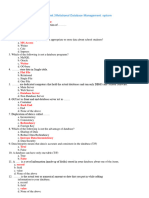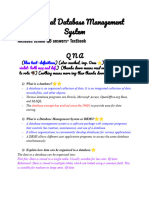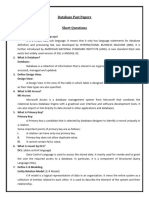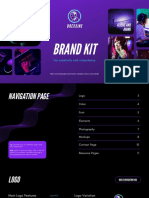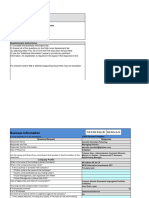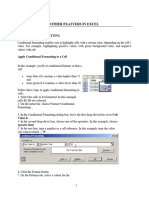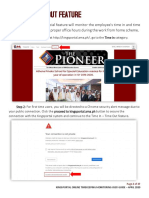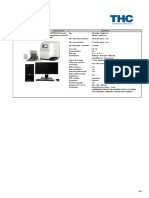ASSIGNMENT-SESSION 1 CLASS: X SUBJECT: IT
PART B- UNIT 3
(ADVANCED)
1. What is database?
A database is a collection of logically related data. The database systems store centrally
at one place where from all applications can get the data required.
2. What do you understand by Data Inconsistency?
Multiple mismatching copies of same data is known as Data inconsistency.
3. What is meant by Data Redundancy?
Duplication of data in database tables is called Data Redundancy.
4. Write the key features of DBMS?
1. It reduces Data redundancy
2. It is used in sharing database
3. It ensures Data security
4. It reduces Data inconstancy
5. Write the basic features of LibreOffice Base?
1. LibreOffice Base is designed to allow users to easily create, access, modify, and view
databases and their data.
2. It provides users with a graphical user interface that allows users to work with four
main tools: Tables, queries, forms, and reports
6. How do you interpret ‘Field’ in context of a DBMS?
A Field is the column of a table in a database which is used to store the data. A field
represents one related part of a table. It contains the logically related data contained in
a database.
7. What is a primary key? What is an alternate key?
Primary key is a field that uniquely identifies the records in a table.
Alternate key is a field in a table which can also serve as a Primary key.
�8. What is the need of setting relationships between tables?
Relationships are used to establish links between two or more tables of a database.
RDBMS is a relational DBMS in which tables are linked to each other by fields
9. What is a DBMS? What importance does it have for an enterprise?
A DBMS is a computerized record keeping system whose purpose is to manage the data
and make it available as per the requirement.
10. What are advantages of DBMS over normal life system?
1. It reduces Data Redundancy
2. It provides Data Security
3. It increases Data Inconsistency
4. It provides sharing of data
11. What are Forms, Queries. Reports in base?
Forms: Form provide an interface in user specified layout which lets the user to view the
data or enter new data or to modify the existing data records. A form can be saved
separately and when needed it can be modified or deleted within the respective table.
Queries: In database, Query is a tool through which data is evaluated or manipulated
and reports are generated. A user can apply filter criteria in query so that only those
records which meet the criteria are evaluated and displayed.
Reports: A report summarizes or displays the information in a format that is suitable for
viewing or publishing. Reports are used to present the results in a meaningful and useful
manner. Reports can obtain information from tables or queries. They are printed to share
information.
12. What are the different steps involved in ‘Designing a Database’?
1. Determine the purpose of your database.
2. Determine the table you need.
3. Determine the Fields you need.
4. Identify the field/(s) with unique values in each record.
5. Determine the relationships between tables.
6. Redefine your design.
� 13. Name some popular DBMSs.
MS ACCESS, Oracle, My SQL
14. How is a relational database different from a flat database?
In a flat file database, all the data is stored in a single file Spreadsheet.
In a relational database, data is stored in multiple tables linked via common fields e.g.
LibreOffice Base.
15. Name different types of Keys in a table.
Primary Key, Foreign Key, Composite primary Key, Alternate Key, Candidate Key.
16. What is Foreign key?
A Non- primary key field /attribute in a table is called a foreign key if it is a primary key
in another table.
17. What is Composite primary key?
The Primary key that consists of a combination of two or more fields or attributes is
known as Composite key or Composite Primary Key.
18. How is foreign key different from a primary key?
Foreign Key Primary Key
A Field or group of fields in a relational A Special relational database table field or a
database table that provides an association combination of multiple fields that allows to
between data in two tables. uniquely identify all table records.
A table can have multiple Foreign keys. Table can have only one Primary key.





